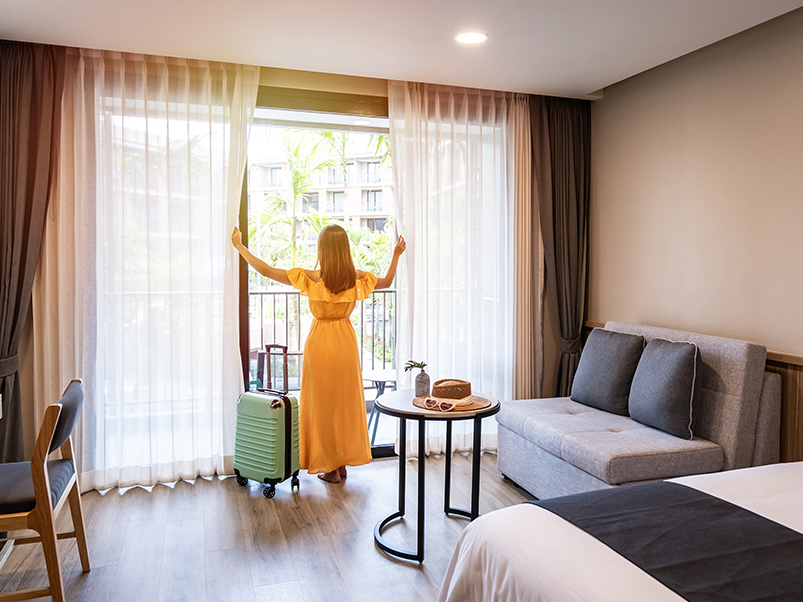
For millions of older adults in the United States, accessing safe, stable, and affordable housing is a critical component of healthy aging. As fixed incomes meet rising costs, the federal government—primarily through the Department of Housing and Urban Development (HUD)—offers essential programs designed to lighten the housing burden on seniors, providing security and peace of mind.
This article guides you through the core government housing programs, eligibility requirements, and the crucial steps to securing subsidized housing for yourself or a loved one.
🔑 The Cornerstones of Senior Housing Assistance
The U.S. government offers several pathways for low-income seniors to obtain housing assistance. These programs generally fall into two main categories: projects where the assistance is tied to a specific building, and tenant-based vouchers that move with the resident.
1. Section 202: Supportive Housing for the Elderly
This program is the gold standard of federal senior housing because it is designed exclusively for very low-income elderly households (age 62 and older).
- What it is: Section 202 provides capital advances and rent subsidies to private, non-profit organizations to finance the construction or rehabilitation of housing specifically for seniors. These are often apartment complexes tailored for older adults, featuring amenities like grab bars, walk-in showers, and common areas.
- The Key Benefit: Residents typically pay only 30% of their adjusted gross income for rent, with the government covering the difference. Crucially, these properties frequently include supportive services—such as a service coordinator, transportation, and communal activities—to help residents age in place independently.
- How to Apply: Unlike voucher programs, you must apply directly to the management office of the Section 202 property you wish to live in. Finding these specific properties is the first step.
2. Section 8: Housing Choice Voucher Program (HCV)
The Housing Choice Voucher program is the nation’s largest rental assistance program, and it's an excellent option for seniors seeking flexibility.
- What it is: Section 8 provides a subsidy (the voucher) to the individual, not the apartment unit. This allows eligible seniors to rent an apartment, townhouse, or single-family home from any private landlord who agrees to participate in the program.
- The Key Benefit: This program offers the greatest choice in location. If you want to remain in a specific neighborhood or close to family, the HCV allows you to do so, provided the unit meets certain safety standards and the rent is deemed reasonable. As with Section 202, the senior generally pays only 30% of their adjusted income toward the rent.
- How to Apply: You must apply through your local Public Housing Agency (PHA). Eligibility is based on income limits set by HUD for your area.
3. Public Housing
Public Housing consists of apartments and homes owned and operated by local PHAs for low-income residents, including the elderly and people with disabilities.
- What it is: These are physically owned properties where the rent is calculated based on the tenant's income.
- The Key Benefit: It offers extremely affordable housing managed by a government entity, ensuring strict safety and habitability standards.
- How to Apply: You must apply through your local Public Housing Agency (PHA).
🔎 Eligibility and Application: What You Need to Know
While the programs differ, the core eligibility standards for government senior housing are consistent across the board. The main hurdle is demonstrating low-income status and preparing for waiting lists.
Income Limits
To qualify for most programs, your household's income must fall below a certain percentage of the Area Median Income (AMI), which is set annually by HUD and varies by metropolitan area and county.
- Very Low Income: Generally defined as income that is 50% or less than the AMI.
- Extremely Low Income: Typically 30% or less of the AMI.
Most applicants for Section 202 or Section 8 must fall into the very low or extremely low-income categories.
The Waiting Game
The demand for subsidized housing in the U.S. far outstrips the supply. As a result, waiting lists are common and can often span years.
- The Critical Advice: Apply to multiple programs and multiple properties as soon as possible. Many PHAs and property managers close their waiting lists when they become too long; you must check their websites frequently for open enrollment periods.
- Prioritization: Many PHAs offer preferences that can move a senior up the list, such as being homeless, paying more than half of their income for rent, or being a veteran. Make sure to identify and document any preference you qualify for on your application.
Essential Documentation
When applying, be ready to provide extensive documentation:
- Proof of Age: Birth certificate, driver's license, or passport.
- Proof of Income: Social Security benefit statements, pension documentation, and tax returns for all household members.
- Proof of U.S. Citizenship or Eligible Immigration Status.
🔗 Suggestions
Starting your journey requires reaching out to the right organizations. These official government and non-profit resources are the best places to find information and apply.
Official Government Links for Housing Assistance
- Find Your Local Public Housing Agency (PHA): This is your essential first stop for applying to the Section 8 Housing Choice Voucher program and Public Housing.
- Find Affordable Rental Housing (HUD's Search Tool): Use this map-based tool to locate subsidized apartment communities, including many Section 202 properties, in your area.
- USDA Rural Development (RD) Housing: If you live in a rural area, the RD offers additional programs, including rental assistance for specific rural housing projects (Section 515).
- HUD's Hope Hotline (General Housing Counseling): Offers free counseling and resources to help people with housing concerns, including finding local assistance.
- Call 1-888-995-HOPE (4673)
Non-Profit Guidance and Resources
- National Council on Aging (NCOA): Provides excellent articles and tools to connect older adults with benefits, including housing and utility assistance.
- AARP Foundation: Offers resources and guides specifically on how older adults can find affordable rentals and rent relief programs.
- Local Area Agency on Aging (AAA): These local agencies, funded by the Older Americans Act, provide information and referrals for all types of senior services, including local affordable housing options and service coordination.



